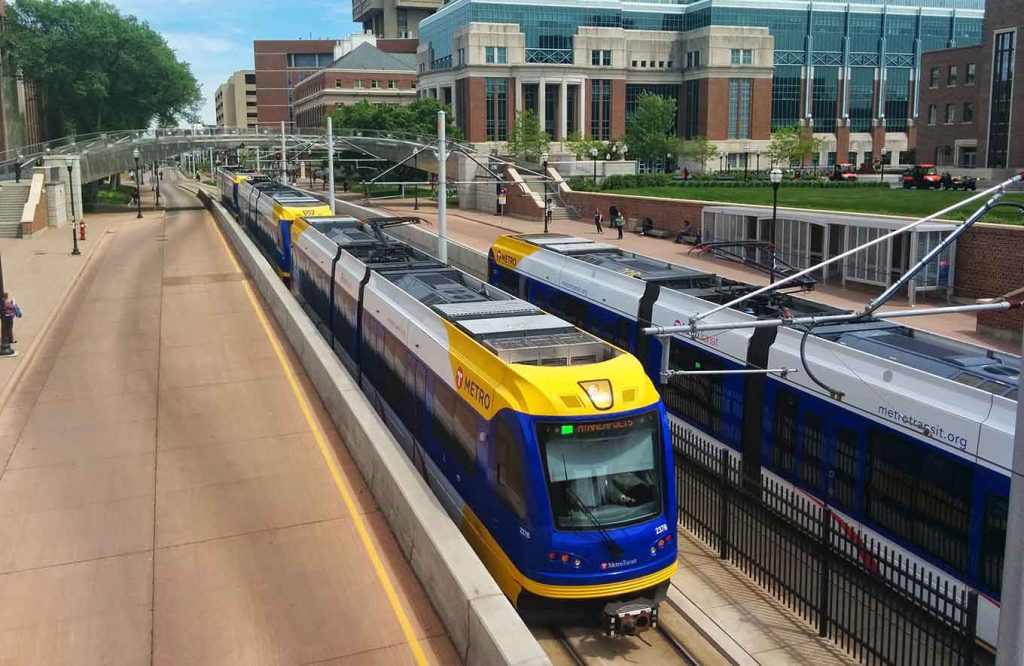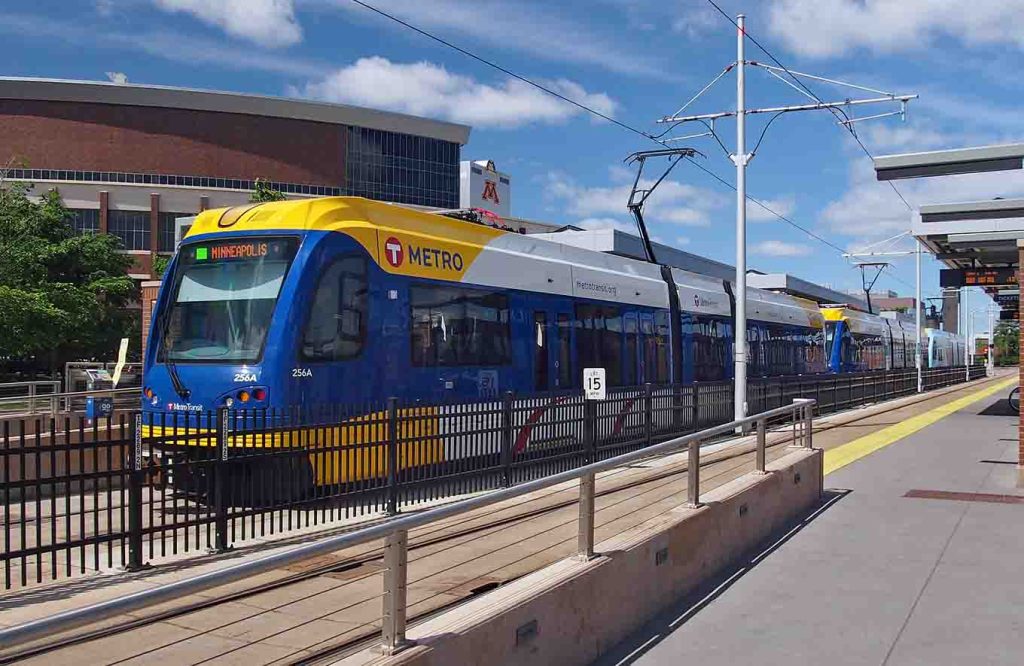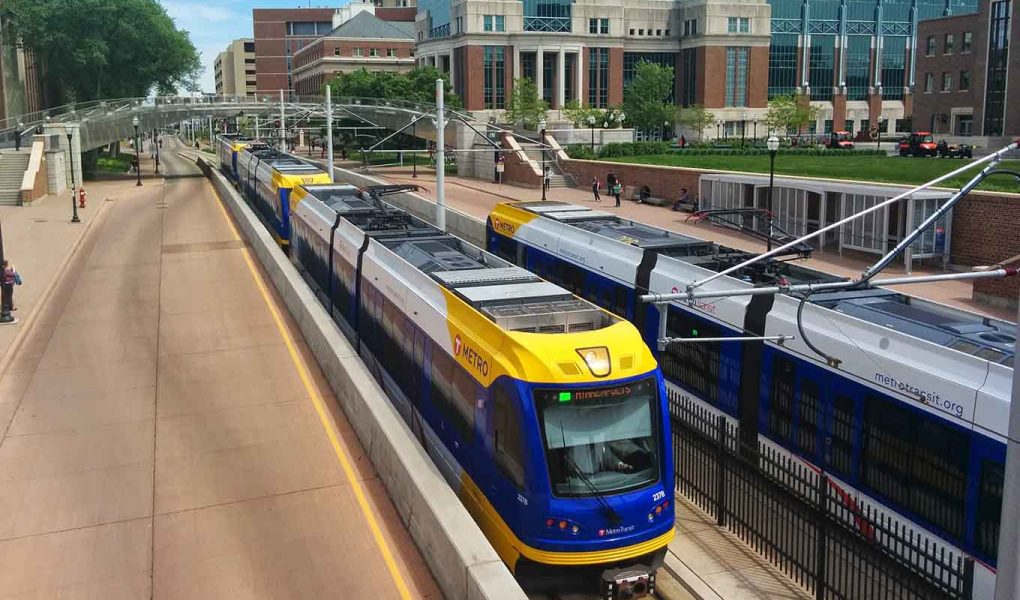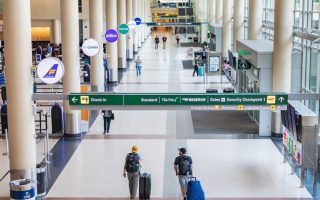As one of the important cities in the Midwest of the United States, Minneapolis has an efficient and diverse transportation system that can effectively meet different travel needs. Whether you are a first-time visitor to the city or a permanent resident here, understanding and using Minneapolis’s transportation methods properly can make it easier for you to travel around the city. The city’s transportation network is very complete, covering public transportation, shared bicycles, walking paths, and self-driving car rentals.
For tourists, public transportation is the most economical and convenient option. Subways, buses, etc. can take you to major attractions in Minneapolis. If you like to travel by bicycle, Minneapolis’s shared bicycle system is also a good choice, especially for experiencing the city’s lakes and parks in the summer. Self-driving car rentals are suitable for travelers who want more freedom, especially when planning to explore the suburbs and surrounding natural attractions.
1. Public transportation: the first choice for easy travel
Minneapolis’s public transportation system consists of two main parts: buses and light rail. Whether you are heading to the downtown business district or exploring the natural attractions in the suburbs, public transportation provides a convenient way to travel.

1.1 Buses
Minneapolis’s bus system is operated by Metro Transit and covers most of the city. Buses are a common choice for tourists and locals, especially for those who do not want to rely on private cars. The city’s extensive bus network can take you to major attractions, shopping malls and restaurants. The frequency of buses varies from line to line, but they are usually guaranteed to run frequently during peak hours.
Bus fares are relatively affordable, and you need to buy a ticket before riding. You can pay cash on the bus or use the Metro Transit official app to buy tickets. In addition, you can enjoy certain discounts when purchasing monthly or single-trip tickets. It should be noted that most Minneapolis buses do not have direct air-conditioning facilities, especially in summer, so it is very necessary to bring water and appropriate clothing.
1.2 Light Rail
In addition to buses, Minneapolis’s light rail system (Light Rail) is also a highlight of the city’s transportation. Light rail lines connect the city center to surrounding areas, including the Minneapolis-Saint Paul International Airport. Light rail is fast and comfortable, making it a popular choice for many commuters.
Minneapolis currently has two main light rail lines:
The Blue Line:
runs from downtown Minneapolis to the Minneapolis-Saint Paul International Airport, passing through many important business and cultural districts.
The Green Line:
connects downtown to St. Paul, passing through several educational, medical and commercial areas along the way.
The cost of light rail is similar to that of buses, and tickets can be purchased through the official app or ticket machines at the station. Light rail services are also frequent, especially during peak hours. For tourists who want to get to their destination quickly, light rail is undoubtedly an efficient option.
1.3 Booking Platforms
Although public transportation is undoubtedly convenient and affordable, tourists often prefer to use Ride Share services and taxis. If you prefer to plan your trip through mobile apps, you can use platforms such as Uber and Lyft to plan your travel routes in advance and enjoy personalized services.
2. Bicycles: A fashionable choice for green travel
Minneapolis is a very bike-friendly city with more than 100 miles of bike lanes, many of which are designed specifically for cyclists. The city also has a rich cycling culture, and you can find a route that suits you, from casual riding to challenging long-distance riding.

2.1 Renting a bicycle
Minneapolis also has a very complete bicycle rental system, and Nice Ride Minneapolis is one of the city’s largest bicycle sharing platforms. Whether you are traveling in the city or planning a short tour around the city, the shared bicycles provided by Nice Ride can help you travel easily. Just register and rent a bicycle through the official app, and you can pick up and return the bicycle at multiple rental points in the city, which is very convenient.
The cost of renting a bicycle is usually calculated based on time, and the cost is moderate, which is suitable for short trips. If you plan to ride for a longer time, you can also choose to rent it by the day. In order to ensure cycling safety, many bicycle lanes in downtown Minneapolis are equipped with special isolation belts to ensure the safety of cyclists.
2.2 Bicycle Parking and Safety
When riding, be sure to pay attention to where you park. Parking facilities in the city are usually complete, but please avoid parking your bicycle in illegal places to avoid being fined or lost. To ensure the safety of your bicycle, it is best to use a high-quality lock.
3. Walking: Another way to explore the city
Walking is one of the most environmentally friendly and healthiest ways to travel. Many areas in Minneapolis are suitable for walking, especially in the city center and around the lake area. These areas have flat roads and good greenery, suitable for tourists to stroll leisurely and enjoy the beautiful scenery around.
3.1 Downtown Walking Routes
Minneapolis’s downtown is known as a “pedestrian-friendly city”, and many shopping malls, restaurants, and cultural attractions can be easily reached by foot. For example, the famous Minneapolis Sculpture Park, the Aquarium, and the trails around Lake Minnehanka are all very suitable for hiking. In addition, the skyscrapers in the city and the pedestrian streets of various commercial districts also provide tourists with convenient shopping and dining options.
3.2 Safety and convenience of walking travel
Although walking is a convenient and healthy way to travel, you still need to pay attention to safety when traveling at night, especially in more remote areas. Make sure you are familiar with the route and keep an eye on your surroundings. Also, bring along essential items like water, comfortable shoes, and chargers to help you make it through a full day of walking.
4. Car Rental: A Flexible Option for Self-Driving Tours
For visitors who want more freedom and flexibility to explore Minneapolis and its surroundings, driving is a good option. Although Minneapolis has a well-developed public transportation network, driving can provide you with greater autonomy and convenience.
4.1 Car Rental Platforms
In Minneapolis, many well-known car rental companies offer self-driving services, including international brands such as Enterprise, Hertz, and Avis. In addition, local car rental platforms are becoming increasingly popular, and platforms like Turo allow visitors to rent cars through private car owners for a more personalized experience.

4.2 Tips for Self-Driving Tours
Parking in downtown Minneapolis is generally not difficult, but during busy times, especially on weekends or holidays, parking spaces may be tight. Around the city center, you can usually find paid parking lots or street parking spaces. In addition, planning your driving route in advance, especially when exploring the lakes and natural parks around Minneapolis, can save a lot of time.
5. Shared travel: the convenience of Uber and Lyft
With the rise of shared travel, Uber and Lyft have become a common means of transportation for Minneapolis residents and tourists. These two applications not only provide convenient taxi services, but also allow users to easily call taxis and quickly reach their destinations through smartphones and GPS positioning.
5.1 User experience
Using Uber or Lyft is very simple. First, users only need to download and register the corresponding application on their mobile phones and select their current location through GPS positioning. Then, after selecting the destination, the APP will display the estimated cost and arrival time, and users can choose to call the vehicle immediately or arrange a reservation service. The driver usually arrives within a few minutes and takes the user to the designated location. In terms of cost, Uber and Lyft will calculate based on the distance between the departure and destination, traffic conditions, and current demand fluctuations. The cost estimate will be displayed in advance in the application, which is highly transparent.
5.2 Suitable scenarios
Uber and Lyft are particularly useful for tourists who don’t want to drive themselves or for short trips. At night or in bad weather, choosing a shared ride can avoid unnecessary hassles, especially in unfamiliar areas.
Minneapolis has a rich and diverse transportation system that can meet the needs of different tourists. From convenient public transportation to flexible bicycle rentals, from walking exploration suitable for short trips to self-driving travel with greater freedom, each method allows tourists to travel comfortably in the city. In this city where lakes and culture coexist, choosing the right means of transportation can not only improve travel efficiency, but also allow you to better experience the unique charm of Minneapolis.
If you plan to explore freely in the city, walking is a great choice. The city trails connect major attractions, allowing you to slowly immerse yourself in the local cultural atmosphere while enjoying the city landscape. If you want to arrange your trip more flexibly, self-driving or shared travel are the ideal options, especially when you want to explore the natural beauty around the city.



